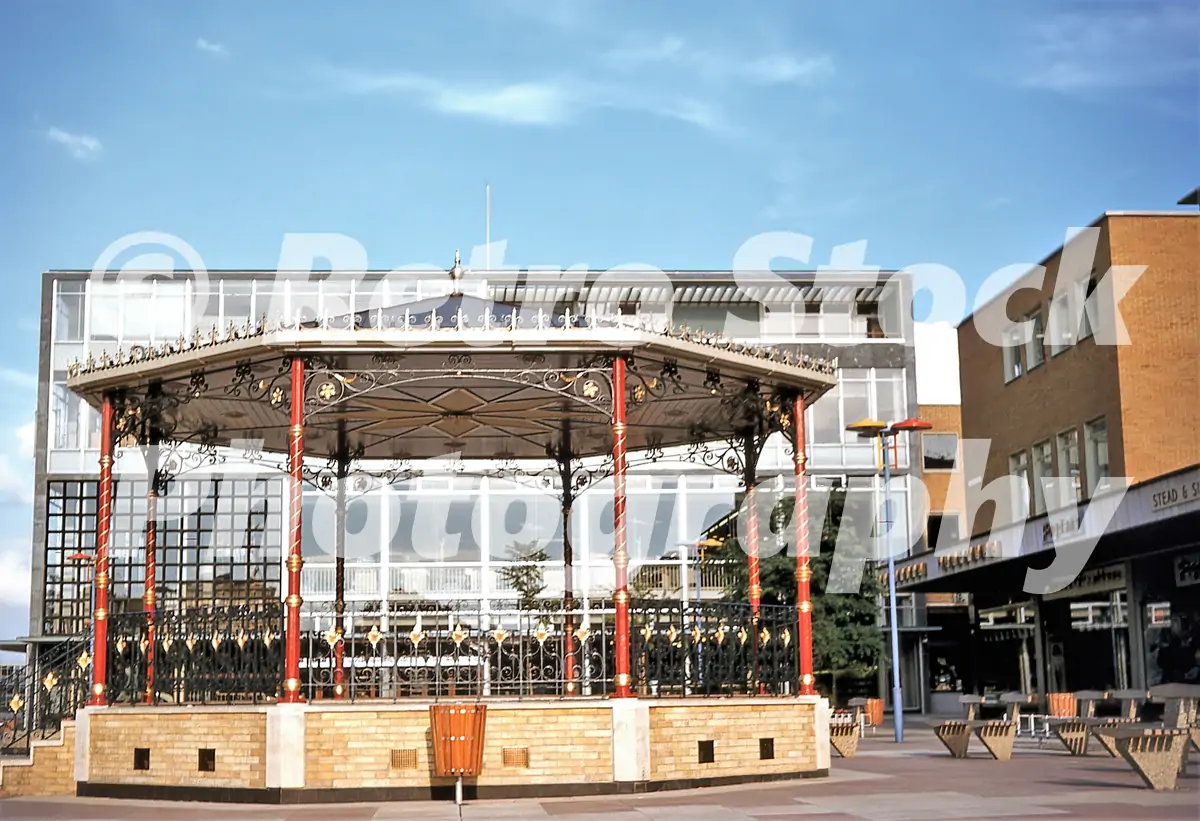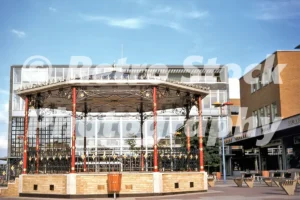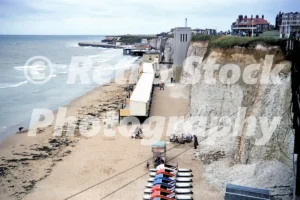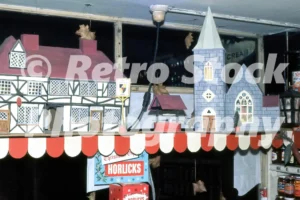In the late 1950s and into the 1960s, Queen’s Square was at the centre of Crawley’s transformation from a small Sussex market town into a thriving New Town. Conceived as the commercial and social heart of the community, Queen’s Square was carefully designed to reflect the post-war ideals of modernity, order and accessibility.
A Civic Vision Realised
Queen’s Square was one of the first parts of the new town centre to be built by Crawley Development Corporation. By the time it officially opened in 1958, it was already functioning as the focal point of the town’s pedestrianised shopping area. Surrounded by clean, low-rise modernist buildings, the square was paved and uncluttered, providing space for shoppers to linger, meet friends, or attend public events. It was a new kind of town centre – designed for people, not cars.
The square was flanked by modern retailers that marked a break from traditional high streets. Instead of narrow shopfronts and cluttered signage, the buildings around Queen’s Square featured plate-glass windows, minimalist facades, and the latest retail branding. These stores were designed to reflect the optimism and confidence of the era.
Queensway and the Queensway Store
One of the most prominent roads leading into Queen’s Square was Queensway, which bordered the edge of the main shopping precinct. It quickly established itself as one of Crawley’s key retail thoroughfares, home to national chains and popular department stores. Among them was the Queensway store, which opened in 1958 as Crawley’s first department store. Specialising in furniture, carpets, and home goods, it catered to the thousands of young families moving into the town’s newly built housing estates.
With its clean modernist façade and expansive display windows, the Queensway store embodied the architectural ideals of the New Town era. Inside, it featured spacious open-plan showrooms and frequently promoted easy credit—appealing to a post-war generation embracing the rise of consumer culture.
In 1968, the store was converted into a Tesco supermarket, reflecting changing shopping habits. In 1986, Tesco had closed, and the building was subdivided into several smaller retail units, marking another shift in the evolution of Crawley’s town centre.
Community and Change
Throughout the 1960s and into the 1970s, Queen’s Square continued to thrive as a retail and community hub. In addition to the Queensway store, visitors would have seen branches of Boots, Woolworths, Timothy Whites, and Marks & Spencer, alongside cafés, tobacconists, and independent traders. The square often hosted Christmas events, parades, and civic functions.
Over the decades, however, the square evolved. Some of the original shops closed, national chains moved elsewhere, and the architectural clarity of the original design became cluttered with later additions. Still, Queen’s Square retained its place in local memory as the heart of Crawley’s New Town identity.
In recent years, parts of the square and Queensway have been redeveloped and refreshed in an attempt to recapture some of the civic pride that defined the area in its early decades.</
Tags: Old Crawley photos, Vintage Crawley photography, Crawley canvas prints, Crawley history, Crawley stock photos, Vintage Crawley images, Crawley gift ideas, Old photos of Crawley, Old pictures of Crawley, Crawley 1950s photos, Historic photos of Crawley, Retro Crawley prints, New Town Crawley history







Reviews
There are no reviews yet.